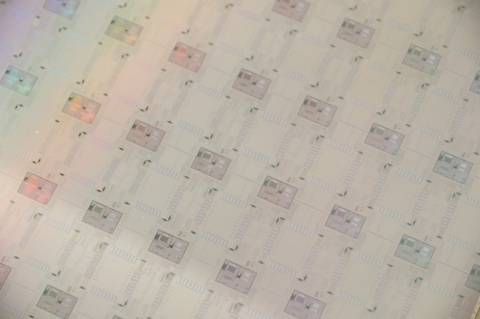Lightmatter Introduces Passage - a Wafer-Scale, Programmable Photonic Interconnect Fabric Using Light to Increase Computational Performance and Reduce Energy
Lightmatter Introduces Passage - a Wafer-Scale, Programmable Photonic Interconnect Fabric Using Light to Increase Computational Performance and Reduce Energy
Lightmatter’s new fabric, a paradigm shift in interconnect technology, enables rack-on-chip solution to datacenter optical-fiber interconnect “spaghetti”
BOSTON--(BUSINESS WIRE)--Lightmatter, the leader in photonic computing, today announced Lightmatter Passage – a wafer-scale, programmable photonic interconnect that allows arrays of heterogeneous chips (CPUs, GPUs, memory, accelerators) to communicate with each other at unprecedented speeds. Delivering on the reality of a rack-on-chip interconnect, Passage offers a fully-reconfigurable connection topology between chips, reducing the cost and complexity of building heterogeneous computing systems.
The unique design of Passage packs forty switchable integrated photonic lanes into the same space that traditionally supports just one optical fiber. Passage, the first in a multi-year roadmap of interconnects with increasing performance enables 1Tbps dynamically reconfigurable interconnect across an array of 48 chips spanning 8 inches by 8 inches, with a maximum communication latency of 5 nanoseconds. The result is higher bandwidth communication at lower energy and without the costly process of fiber-to-chip packaging. This architectural approach provides a proven path to deliver chip-to-chip communications with 100Tbps bandwidth—100x that of currently available state-of-the-art photonic interconnect solutions.
This announcement of Passage follows on the heels of Lightmatter’s August 2020 introduction of its artificial intelligence (AI) photonic computer chip: a general-purpose AI inference accelerator that uses light to compute and transport data—reducing heat & energy consumption and increasing computational performance by orders of magnitude. Passage provides the capability to integrate this chip with a heterogeneous selection of other chips to enable a single wafer-scale, high-speed compute system. The system directly addresses the urgent need for faster and more energy efficient (super)computers, capable of supporting next-generation AI inference and training workloads.
“Lightmatter is leading a necessary paradigm shift in computer architecture needed to power the next giant leaps in compute technology, while also reducing the negative impact on our planet of rapidly-growing state of the art, yet inefficient, compute and communications solutions,” said Nick Harris, co-founder and CEO at Lightmatter. “Modern compute workloads call for system-level performance. With Passage, we’ve created a photonic rack-on-chip solution capable of supporting the future of computing by enabling ultra-high bandwidth interconnection between different kinds of chips, and simultaneously reducing cost, complexity, and energy consumption.”
AI models are getting bigger and more computationally demanding. The latest-and-greatest AI models require the capability of entire datacenters to train effectively, meaning single chip systems are no longer able to address the compute needs of current and future AI problems.
Photonic-enabled systems are the future for both high-performance computing and artificial intelligence.
About Lightmatter
Lightmatter is leading the evolution of computing to reduce its impact on our planet, while also enabling the next giant leaps in human progress. By unifying the unique properties of light as an ideal carrier of information, with the interoperability of electronics, Lightmatter creates photonic processors and interconnect that are faster, more efficient, and cooler than anything else on earth.
Contacts
Adolph Hunter
Strange Brew Strategies
lightmatter@strangebrewstrategies.com
